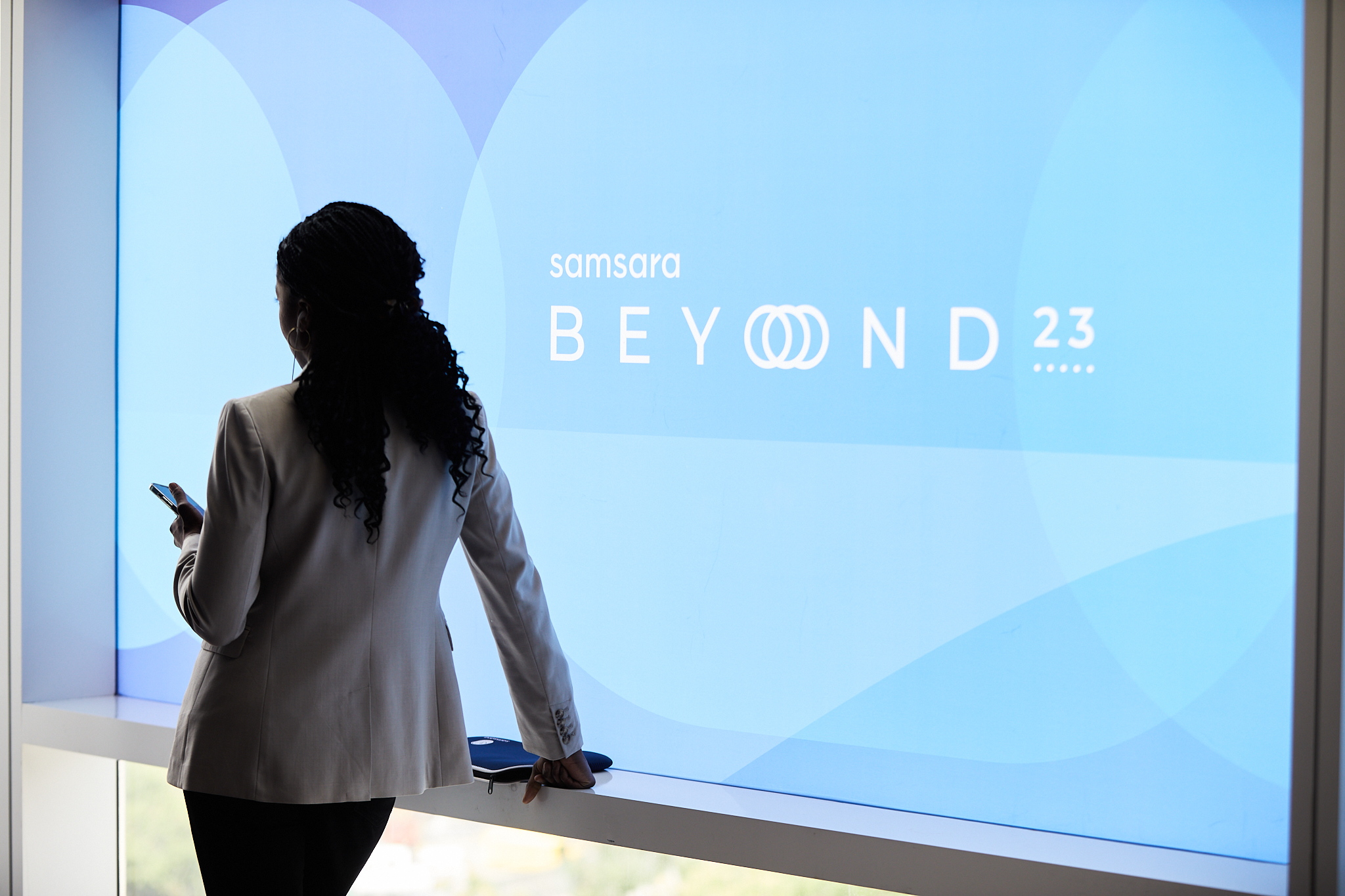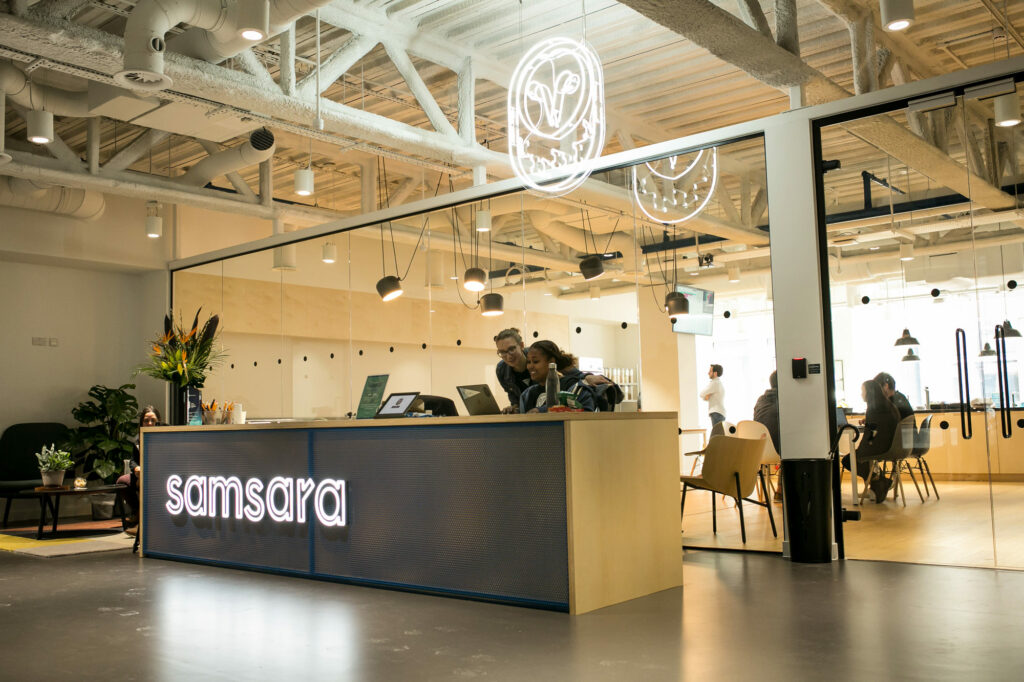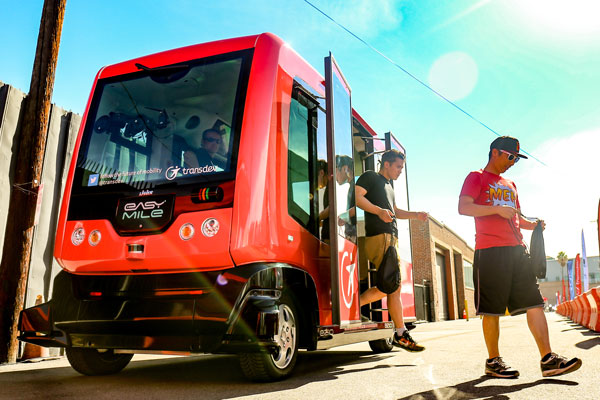June ended with Samsara Beyond, Samsara’s flagship event and a big one in the Internet of Things (IoT) calendar. Held in Austin, Texas, Beyond saw Samsara announce new products and services for its main vertical in the transport field and beyond – and, perhaps rather refreshingly, without a mention of hot tech of the moment, generative AI.
Amongst Samsara’s announcements were the launch of Mobile Experience Management (MEM), in which employees can get customized support like remote training and live troubleshooting through their mobile devices, all while having unnecessary digital distractions reduced, keeping them safe on the road.
Instead of drivers having to wait for in-person feedback on risky driving, meanwhile, Samsara’s Virtual Coach allows drivers to self-coach directly from the Samsara Driver App, and makes it easier for managers to personalize coaching experiences at scale.
Also announced at Samsara Beyond, the new Find My Asset feature allows managers to quickly find lost or stolen high-value unpowered assets. Samsara has also included new data connectors such as Fivetran, Kafka and Power BI, streaming data with more ease to power business applications and workflows.
Samsara Beyond and ERP
A good customer story came early on in the Beyond keynote, as Samsara CEO Sanjit Biswas was joined on stage by Antonello Davi, senior fleet specialist for American Airlines. Davi was a funny and engaging guest, and a customer genuinely satisfied with Samsara’s wares. ERP Today can’t remember the last time it saw a customer so happy that they were basically a one-man hype machine for Samsara. A very clever booking from the brand, it must be said – but what exactly are Samsara’s customers looking for, and where does that overlap with all things ERP?
“When we go spend time with customers, we see a lot of 1990s, early 2000s-era systems. They’re siloed…and they’re using a lot of pen and paper, a lot of manual processes,” Samsara chief strategy officer Kiren Sekar, pictured below, tells ERP Today.
“Really what they’re looking for is a single pane of glass where they can have visibility across their operations.”

Hence Samsara’s USP in the market, but one that may not be readily evident to ERP watchers. Touching on this with us, Sekar connected the dots for our readership.
“It really comes down to having access to data that customers previously didn’t have. Users of ERP know the value of data and how data can transform a business.
“That’s why ERP is the fabric of so many businesses,” he continues. “But when we get out into the physical world… a lot of that data is very limited or non-existent. And that’s what we’re changing. Bringing that data from the physical world into the cloud where customers can have access to it and ultimately make their own business more sustainable and more efficient.”
The sustainability message is a timely one. While everyone’s talking about ChatGPT, the focus in tech has moved somewhat from the ESG debate. Where everyone zigs, Samsara seems to be zagging by focusing on the bread and butter in connected operations of IoT, field workers and sustainable tech.
“(For example) being able to take billions of pounds of CO2 out of the air by using data to find where fuel is wasted, and being able to eliminate that waste. Instead of operators to operate their equipment sustainability, we’re able to complete the same amount of work with less fuel consumption, saving costs and also taking a lot of carbon out of the air.”
Of course, it should be noted that AI is still a big part of the Samsara toolkit. Sekar notes Samsara’s artificial intelligence has sifted through “billions of hours” of video safety material to find moments of interest that can be shared with operators.
“So they can exonerate and protect their drivers and coach them to avoid accidents,” as he puts it. “We’re still in the early days of AI, and we think five, ten years down the line we’re going to be doing a lot more with AI… Think about large language models, generative AI , that’s another tool that’s going to allow us to do even more.”
Alongside this future mapping, Sekar thinks change management will take ten years to take place in physical operations – in other words, Samsara sees its mission in connected operations as one long road trip.
“We see it as a journey that might take the next decade… we’re still early on in it. That takes time, it can’t happen overnight.”




